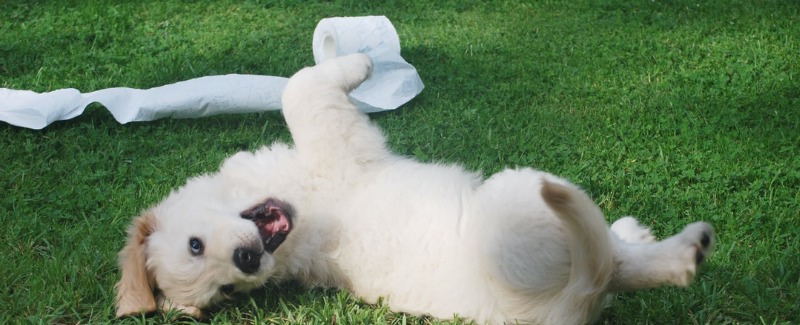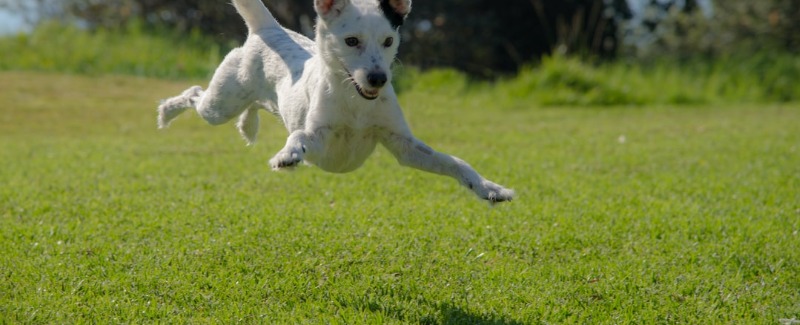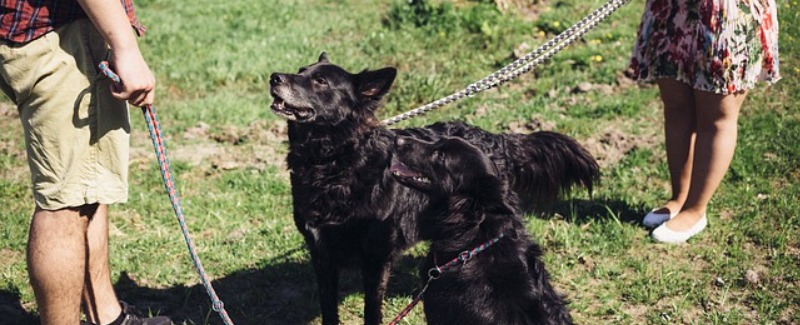You’ll teach your dog the leave it command with treats, and then transfer the meaning to other things he would otherwise pursue with abandon if unimpeded by your command. During the process of teaching your dog to “leave it” on command, you’ll also teach your dog to “take it” on command, so this is really a two-for-one lesson deal.
Leave it is such a practical command, with so many possible everyday applications, and is so easy to teach that there really is no excuse not to take a little time to do it right. It will take some time, and lots of repetition, for your dog to fully understand the command in all situations. If you want the command to be there when you need it, you have to work on it a lot so your dog doesn’t even consider not turning his attention to you, even when what he has to leave is intensely interesting to him.
Meaning It
Contents
The command is not “Leave it, leave it, leave it, LEAVE IT!” or “Leave it?” The command is, simply, “Leave it.” Say it once, just loudly enough for your dog to hear you, but avoid shrieking, even if it’s an emergency. When you need to use the command, it should sound the same way your dog has heard it hundreds of times before in training, albeit perhaps with more volume depending on the circumstances. For your dog to believe you mean it when you say “Leave it,” or that he has to, you must have a position of leadership with your dog, both so he will leave things that he wants, and so he trusts you not to let anything bad happen when you make him turn his attention away from something he thinks he’s defending himself or you from.
Backing It Up
If you’ve done your part by giving your dog sufficient repetition in a wide variety of situations to really know the command, you may never need to correct your dog for ignoring a command (does the phrase “building on success” ring a bell?). If you haven’t done enough training, or your dog was already obsessed with something before you started, particularly something dangerous, you may need to back up your command with an aversive. Depending on your dog and the danger level, you might use a shaker bottle, a squirt gun, water balloons, a remote collar, or whatever else works to stop your dog in his tracks.
Remote collars come in several varieties. Some deliver a warning tone, with or without a squirt of citronella or lemon oil, or a static shock. They are commonly used to “snake break” dogs who live in areas populated by poisonous snakes. Consult a trainer or behaviorist to figure out which type of collar is best for your dog’s temperament and behavior.
In the Beginning
To start, you’re going to teach leave it as a food refusal exercise. You’re going to need lots of soft, pea-sized treats, so make sure you have them ready before you start your training session.
The following shows the procedure to follow:
- Hold 1 treat pinched between your thumb and index finger, say, “Take it,” and give your dog the treat. Repeat 3 times.
- On the next repetition, present the treat as before, but don’t tell your dog to take it. Hold the treat securely, so your dog can smell it but can’t get it. Keep your hand as still as possible and let your dog do whatever he wants, short of chomping on you. If he does, boink him lightly right under his nose with the fingers that have the treat in them.
- Wait for your dog to give up trying to get the treat, even if the only reason he does is to check the floor to see if you dropped the treat.
- The moment he stops trying to get the treat, insert the command and CR, “Leave it! Yes! Good leave it.” Say “take it” and give him the treat. Repeat 5 times
- On the next repetition, say, “Leave it” as you present the treat.
- CR/treat if he immediately backs away from the treat. If not, don’t repeat the leave it command; just wait until he gives up trying to get the treat again and insert your command as you’ve been doing, then try again.
- As soon as your dog is readily leaving the treat, raise your criteria so he also has to give you eye contact before you CR/treat. Make a tiny noise to get him started if you need to.
When your dog is leaving the treat immediately upon command and giving and maintaining eye contact with you, it’s time to move to the next step.
Now You See It
For the next step in the “leave it” teaching process, you’re going to move the treat from between your pinched fingers to the palm of your hand, so your dog can see, not just smell, what he’s leaving. The first few sessions, you can start with a couple of repetitions of “leave it,” as he already knows it, with the treat pinched between your fingers. On the third repetition, instead of pinching the treat, place it on your open palm, and bring it down to, or a little lower than, your dog’s nose level. Say, “Leave it” as he sees the treat. If he backs away and gives you eye contact, immediately CR/treat.
Good timing is essential for this exercise, both to insert the command at the exact right time, and to CR/treat your dog for getting it right. Practice some of the timing exercises in Chapter 5 to help you help your dog be successful quickly.
If he can’t resist the sight of the treat and tries to get it, quickly close your hand around it. Do not tell him “no” or jerk your hand away. Just close your hand around the treat, and if you catch a whisker or lip in your fist with it, poor puppy, he should have listened! As soon as your dog stops trying to get the treat from your closed hand, open it so he can see the treat again. CR/treat or close your hand again, depending on what he does.
Make sure you only CR/treat when he is making the choice to leave the treat and look at you when your hand is open. If your hand is closed around the treat, he’s not leaving it; you’re just preventing him from getting it. Repeat 5 times per session. When your dog doesn’t even think about looking at the treat in your open hand after you’ve said, “Leave it,” you’re ready to move on to the next step.



